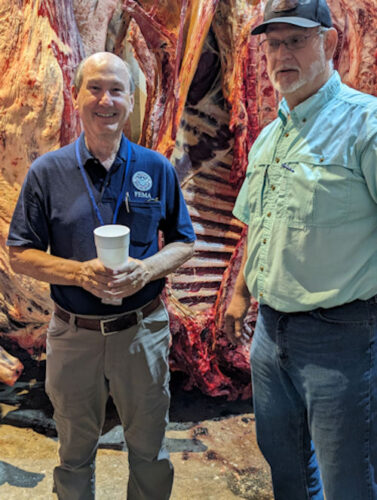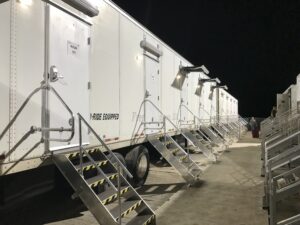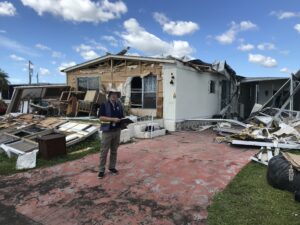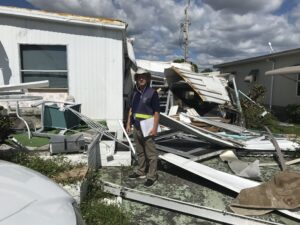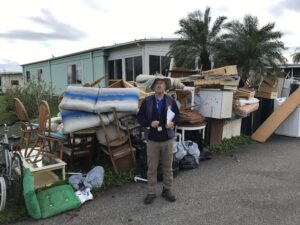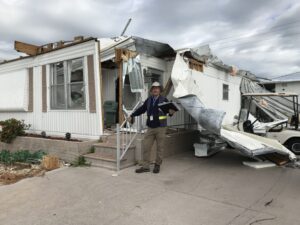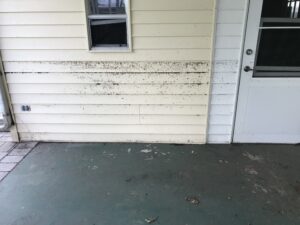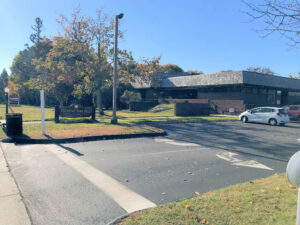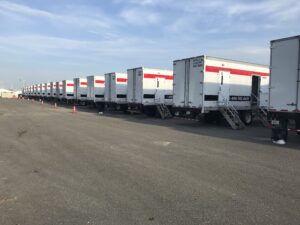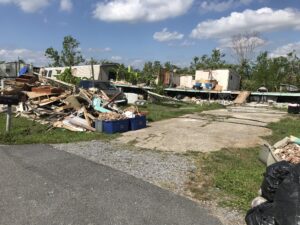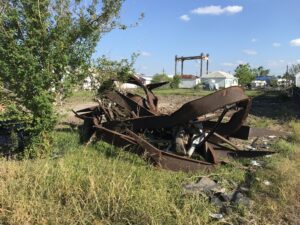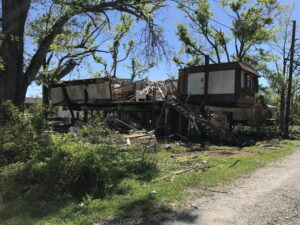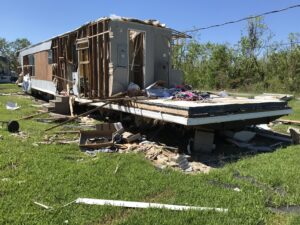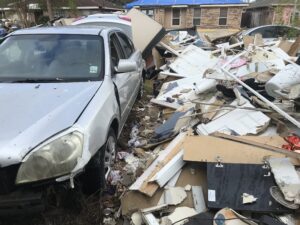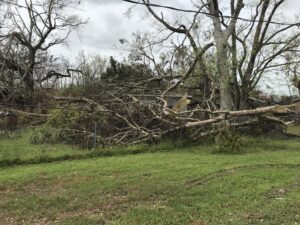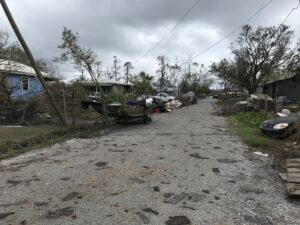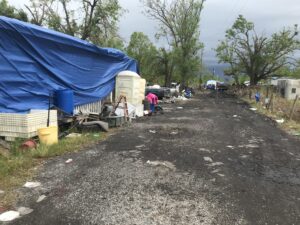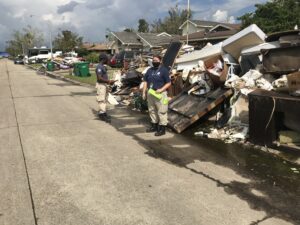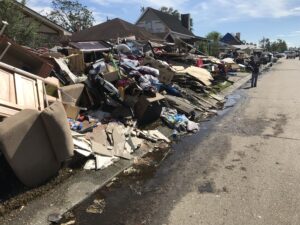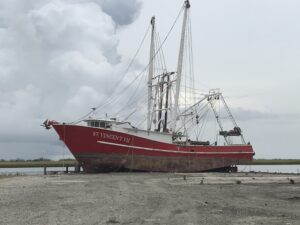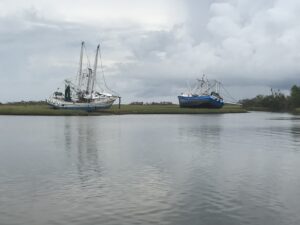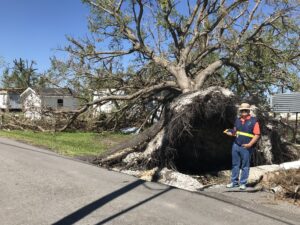Many individuals don’t know that the small Pacific island of Guam is a US territory (like Puerto Rico) and its significance has grown significantly to the US militarily and politically because of the rising tensions between the US and China. The US has significant Navy, Air Force and Marine resources on the small island (roughly the distance from Ventura to Goleta) and its population of about 150,000 is between the populations of Ventura (110,000) and Oxnard (200,000). So in essence it’s a medium sized city on a small island far from anywhere.
On May 24, typhoon Mawar hit the island with the equivalent strength of a Category 4 hurricane with winds of about 140 mph. Shortly thereafter, a presidential declaration of a major disaster brought FEMA into action which meant Leslie and I were called up for deployment. It’s a long hike out there from the mainland! Two long flights with a layover in Hawaii got us to the island without power, no signal lights for busy intersections, and people trying to start on clean-up and recovery. Here are some snapshots of what we saw and how we were involved:
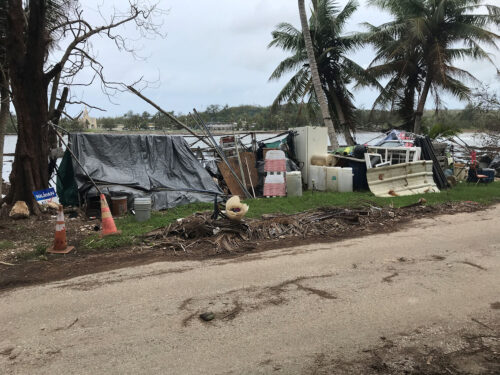
The hardest hit in any disaster are those from lower socioeconomic circumstances. This gentleman’s meager home on the other side of this road was totally demolished. He gathered up what he could and built this shelter on the beach.
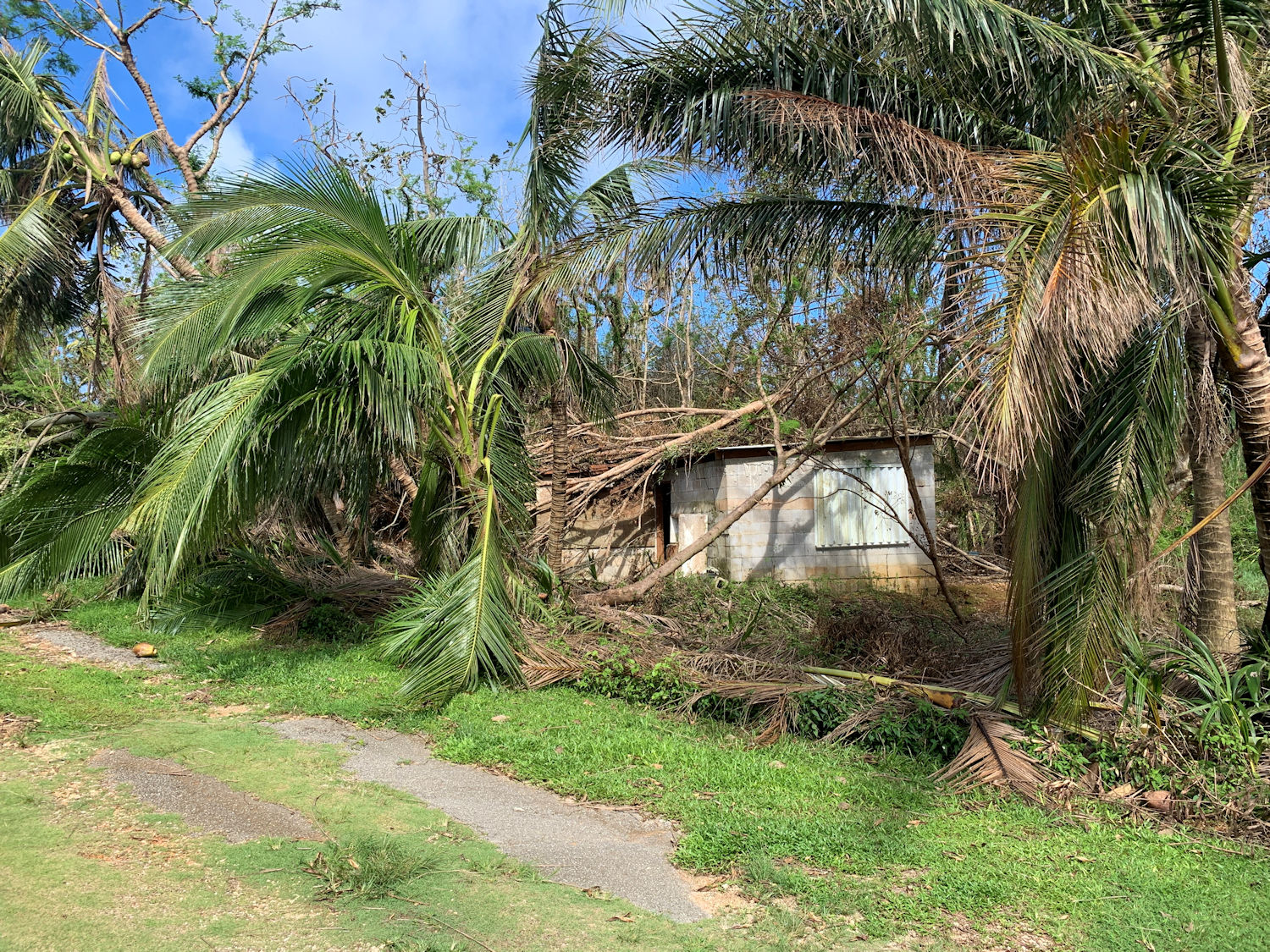
Lots of tree limbs on lots of homes.
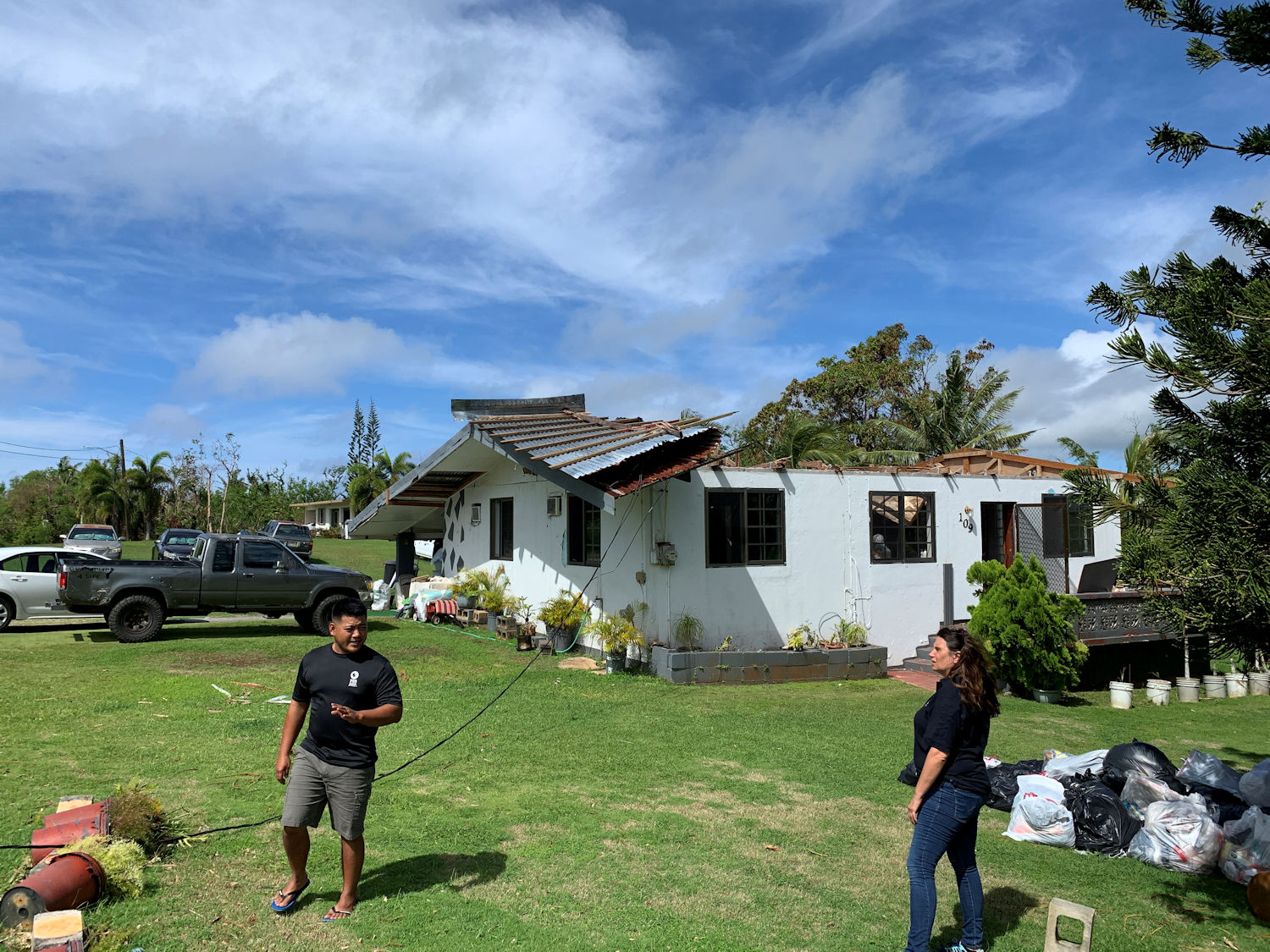
My team partner with the home owner assessing his missing roof and next steps for recovery.
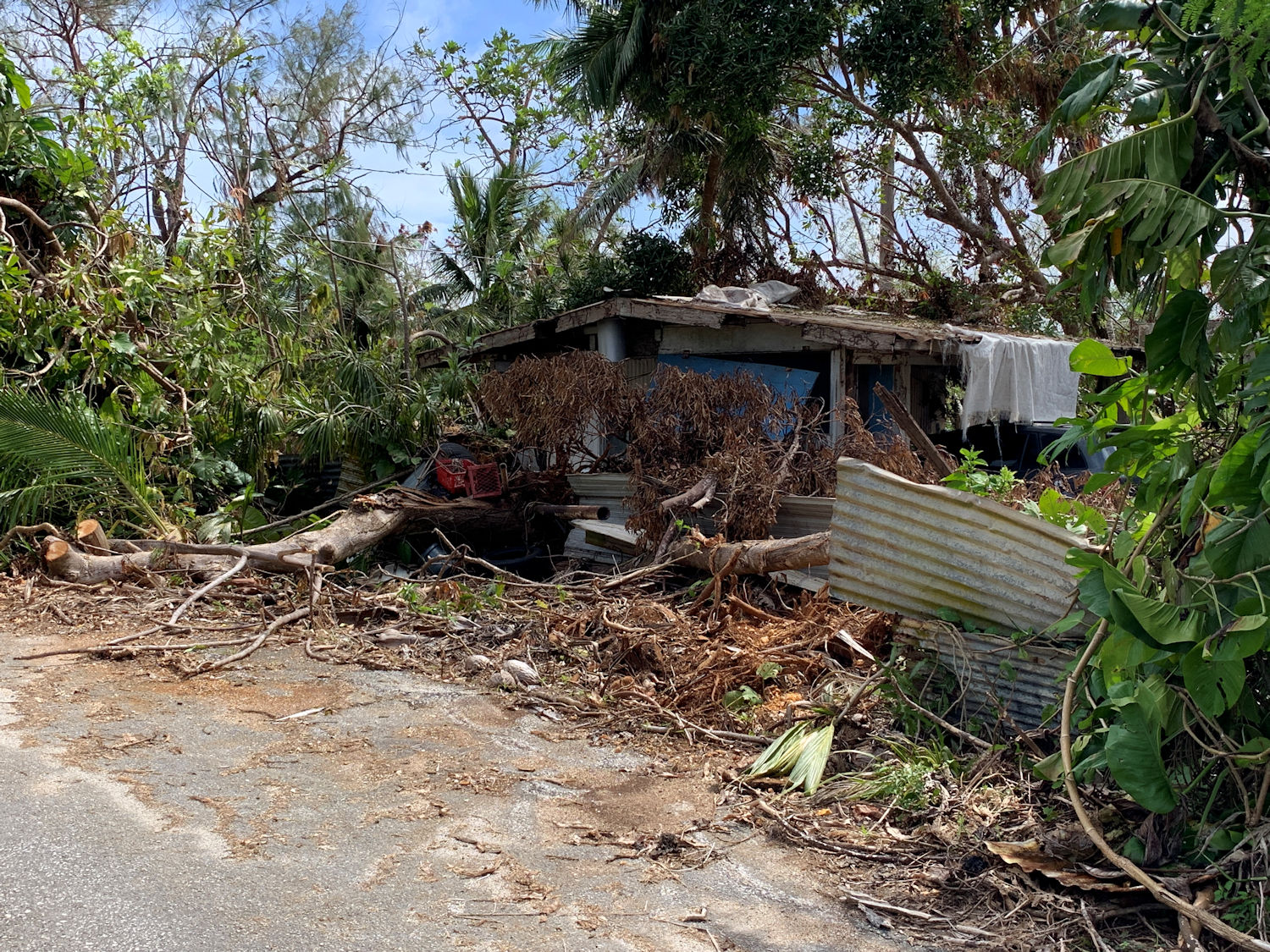
Unfortunately, a common sight out in the country.
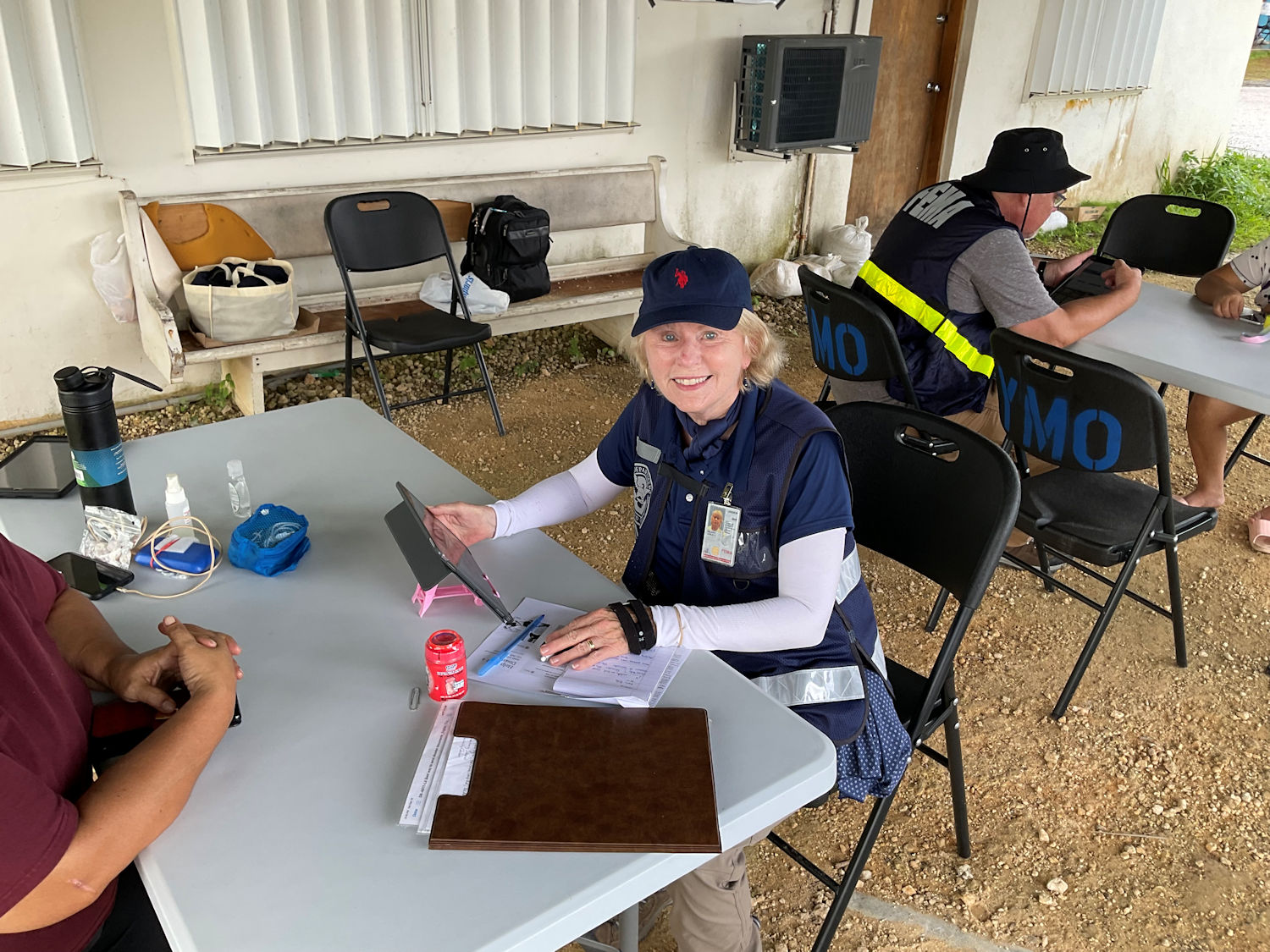
Leslie doing a FEMA registration for a survivor. Always around the storm damaged area, FEMA sets up localized places where neighbors can come to register, get information about resources, and have a “listening” ear to hear their stories of riding out the storm. Many initially are in shock and we help them plot their next immediate steps for food, clothing and shelter.
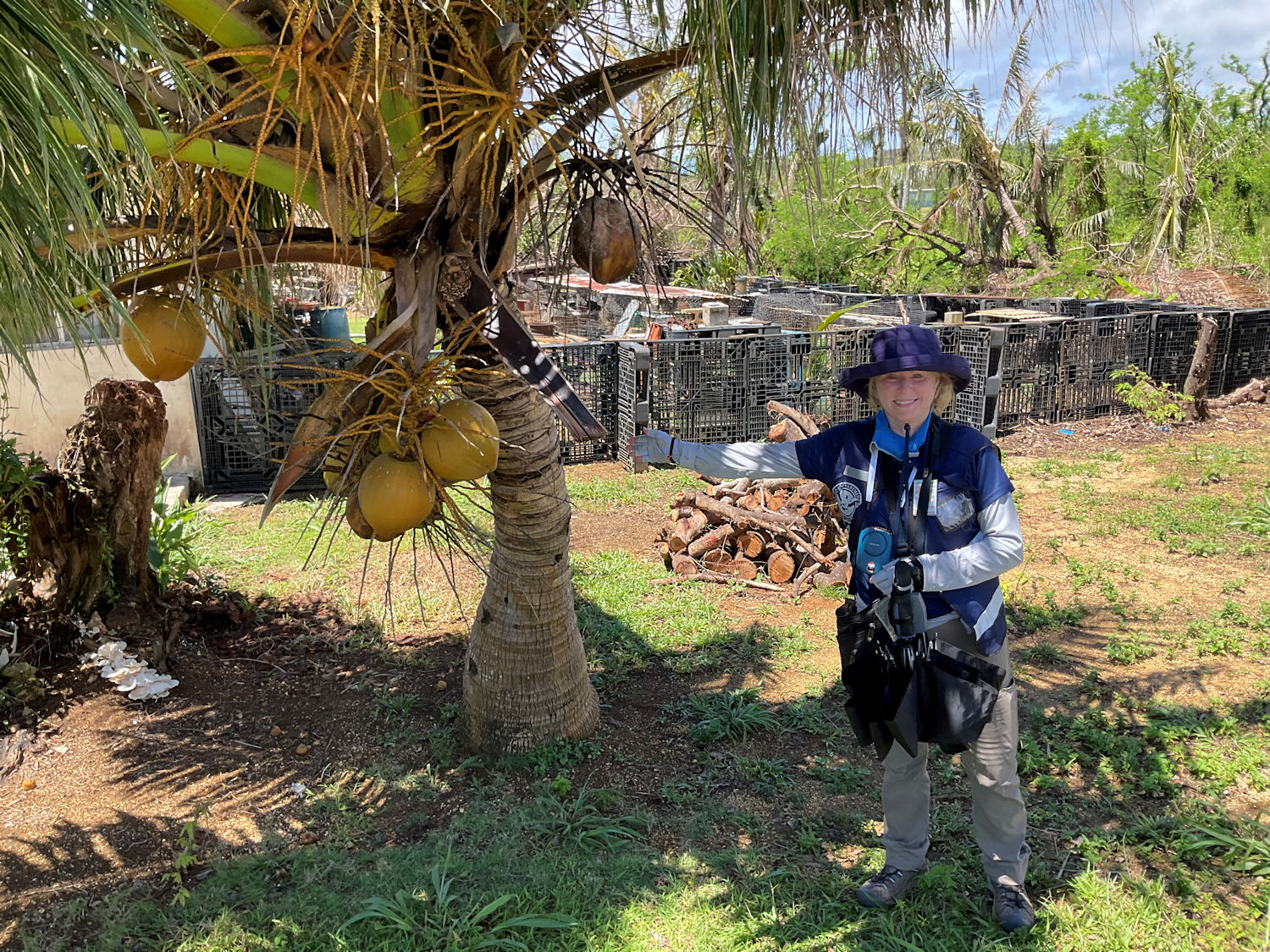
We’re definitely in the tropics!
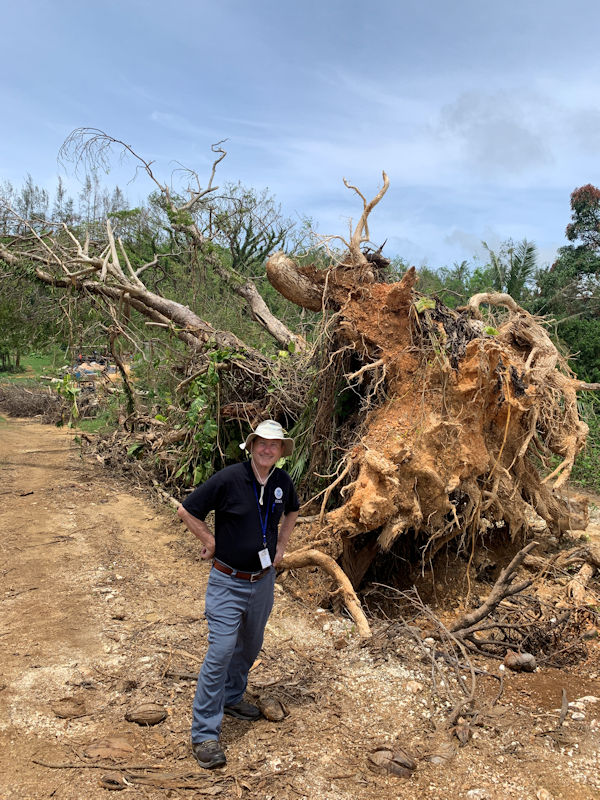
They grow ’em big on Guam…
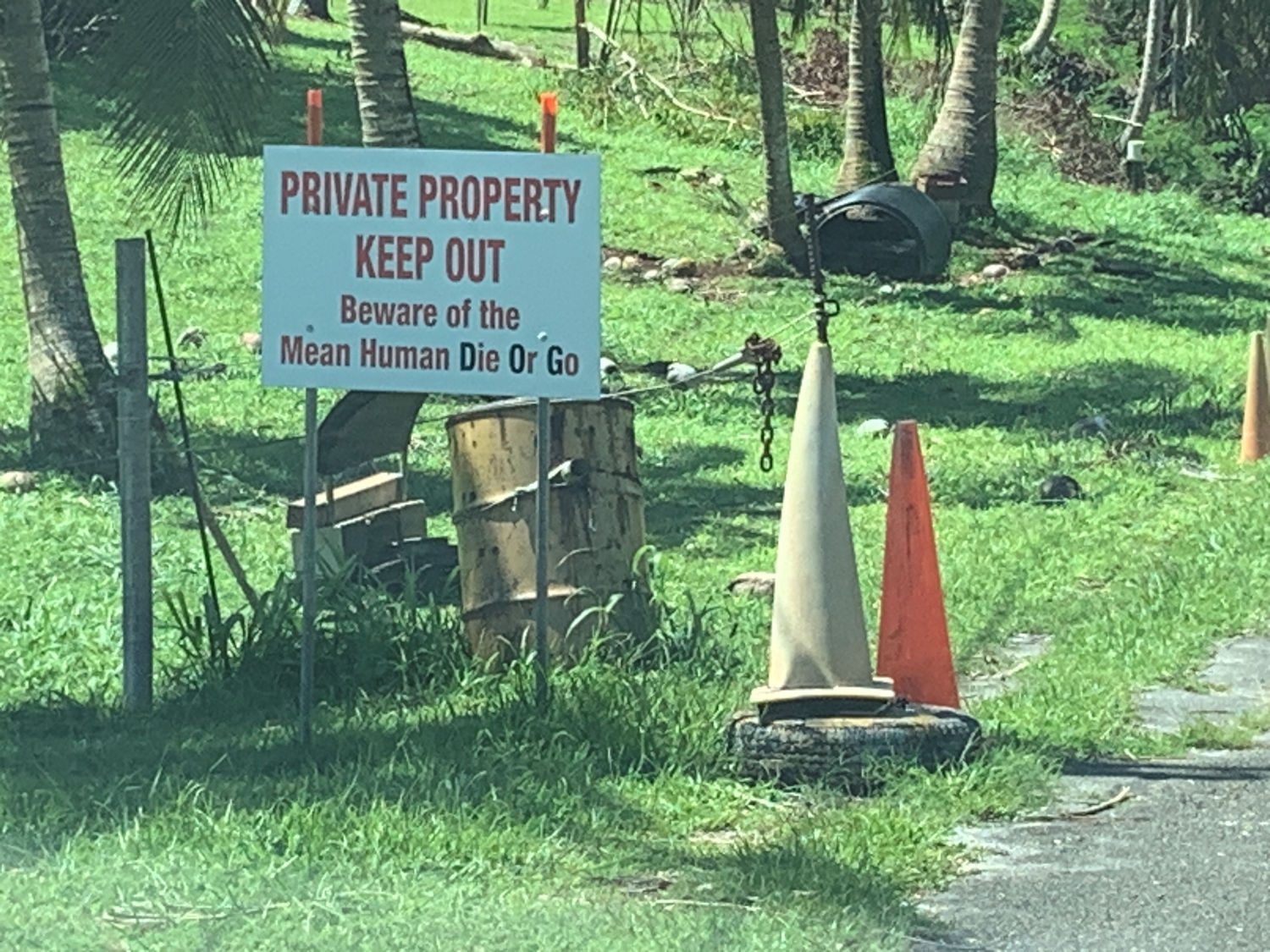
Not everyone wants company. After a week or so being in a fixed location where neighbors come to us, a team of 8 splits into 4 small teams and those 2 partners literally go door to door – either walking and knocking on every door on urban blocks or driving down country lanes to reach the the rural communities. Not everyone wants to see us! These type of signs are more common in the rural areas of Texas and south.
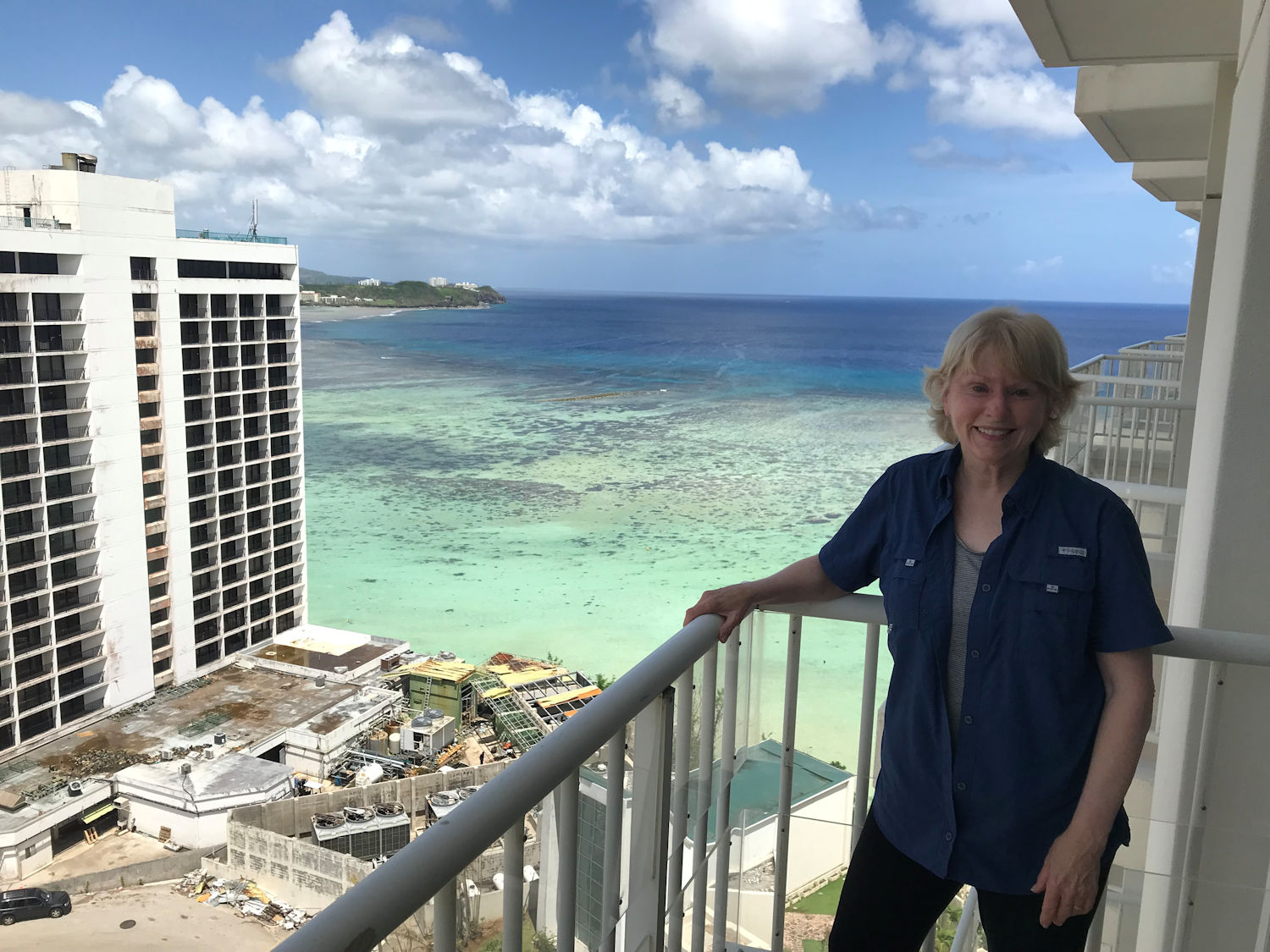
Our team stayed in the Westin hotel. Guam is primarily a tourist destination for S. Korea and Japan, much like Hawaii for the mainline. Unfortunately, we work 12 hour days, sunrise to sunset, 7 days a week for the first 3 weeks or so, then we’ll get a Sunday off. I only went into the ocean towards the end of our deployment one evening after sunset but the water was soothingly warm and relaxing after a full day.
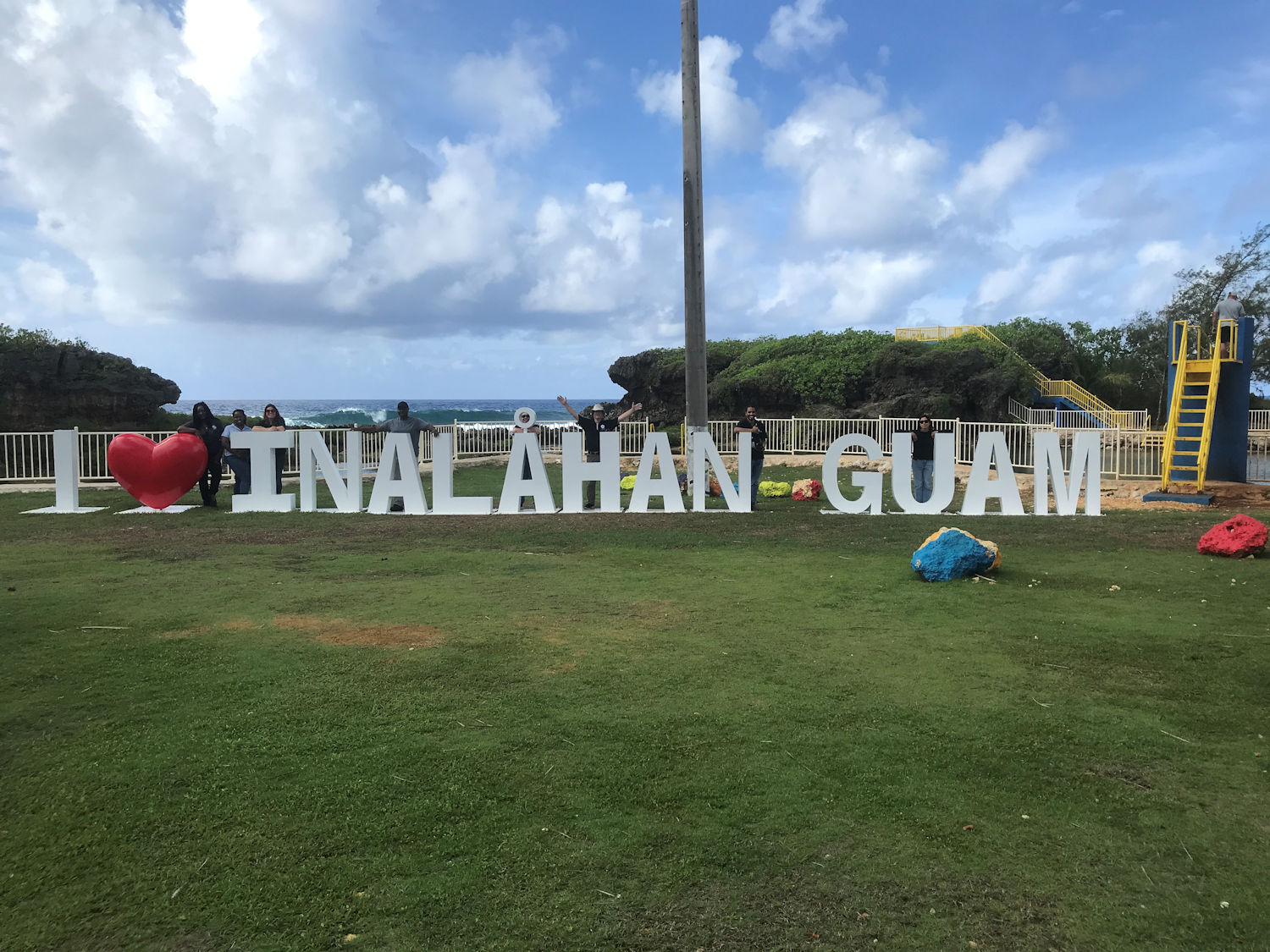
My Team 11 of eight Disaster Survivor Assistance (DSA) members in the village of Inalahan on the southern end of Guam. Next to this sign on the right are two natural pools fed by the ocean that have been made into swimming pools – the high dive was popular! This is where we frequently met as a complete team in the mornings before splitting up into our small 2 person teams then meeting back late afternoons for debriefs, plans for the next day, etc.
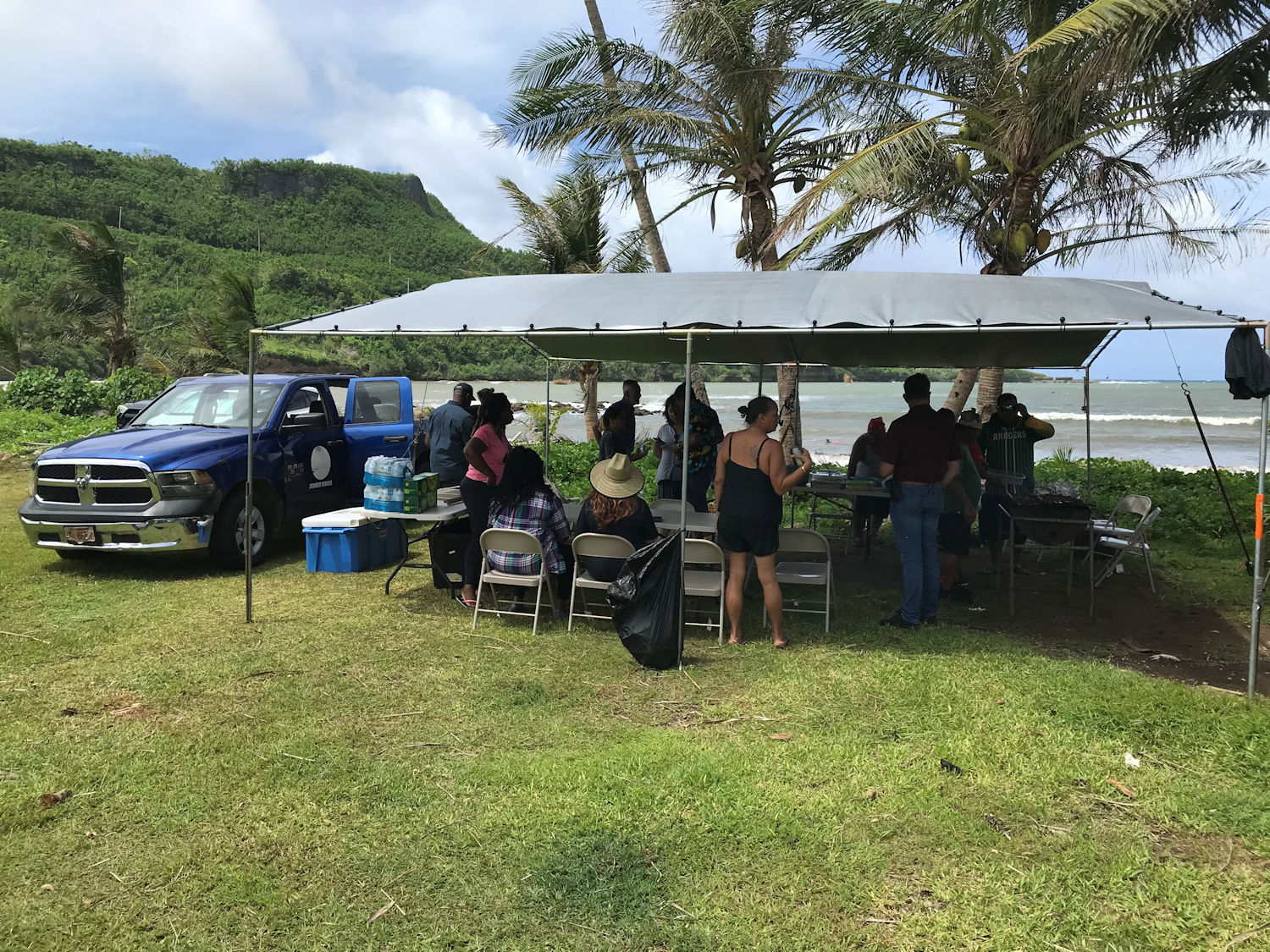
On our last “free Sunday off” before demobilizing, a local village inland on the island where we spent a lot of time graciously threw a BBQ picnic for us on the beach. Rain showers always pass through for 10-15 minutes or so and this afternoon was no exception – thus the tent covering!
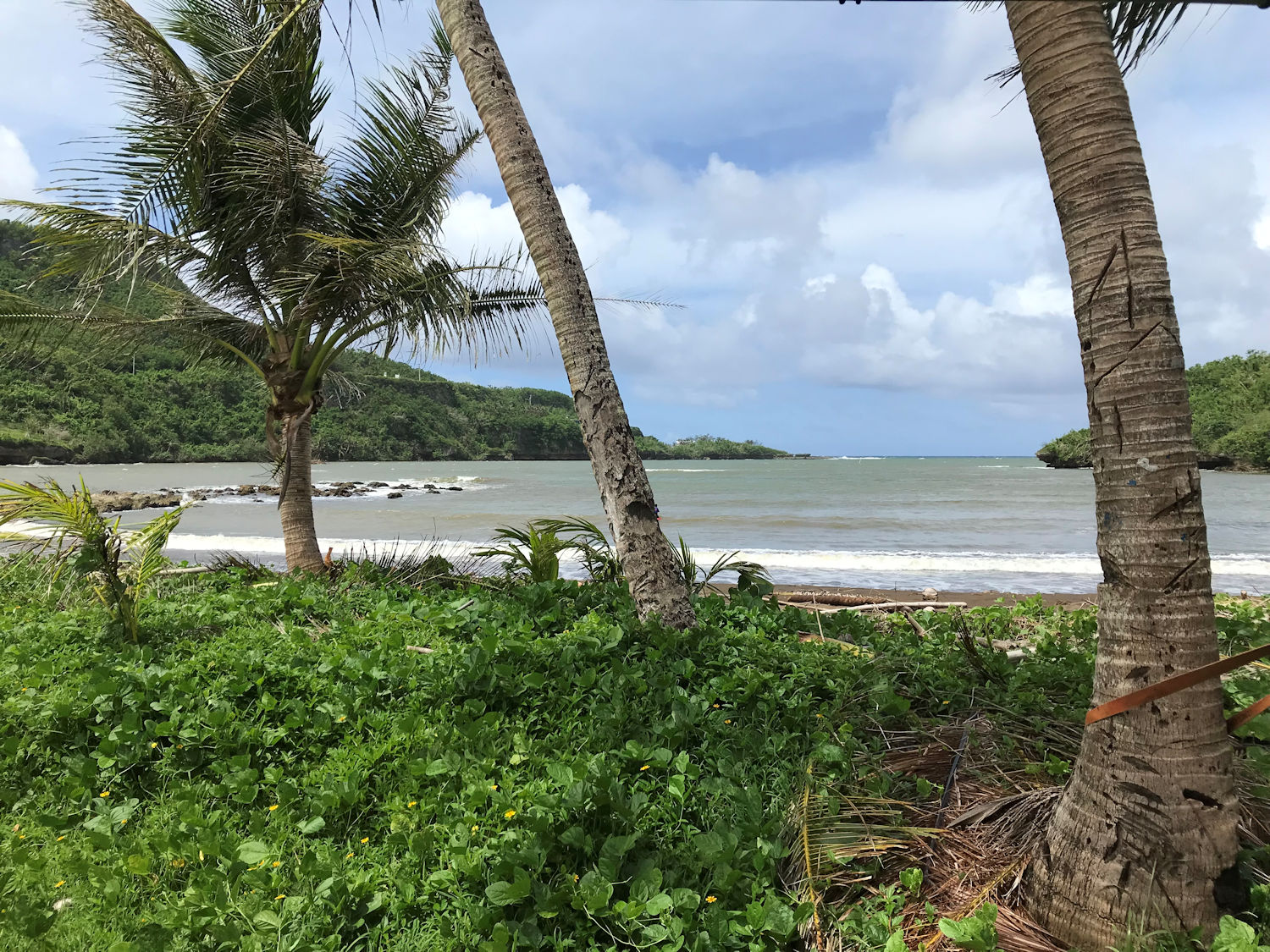
This was the beach for the Sunday picnic. It’s popular for both wind surfing and regular surfing when the surf is up.
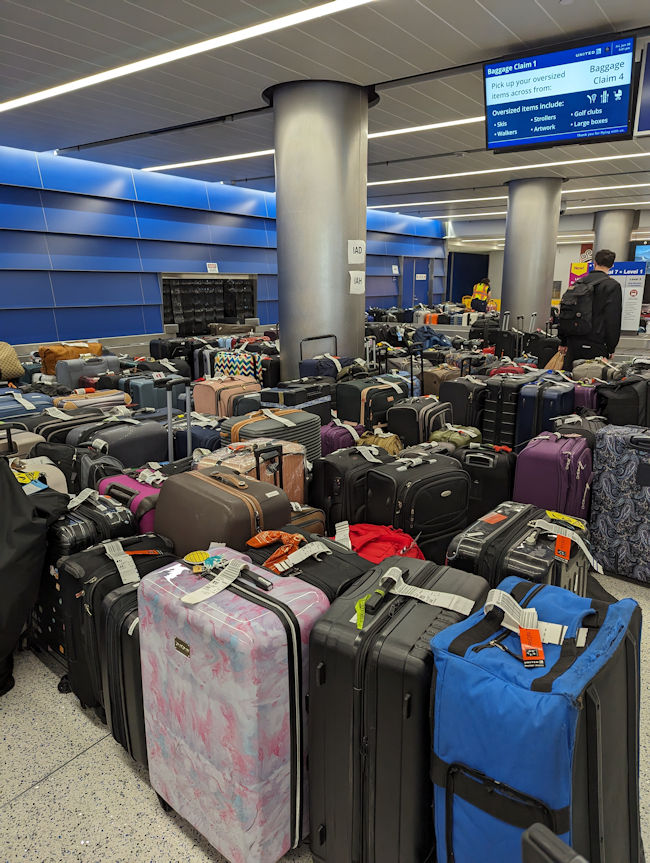
Our trip home involved 7 different time zones plus the dateline. We took off from Guam on a Friday, landed in Hawaii on Thursday, then took off from Friday again for LAX. But when we got to LAX we couldn’t believe the chaos in the carousel area. Luggage was packed everywhere. Then our flight’s luggage was slow to unload, so the chatter among us waiting slowly grew with each passing (but empty) of the turnstile. Luckily we finally got our suitcases after our month of deployment in Guam!
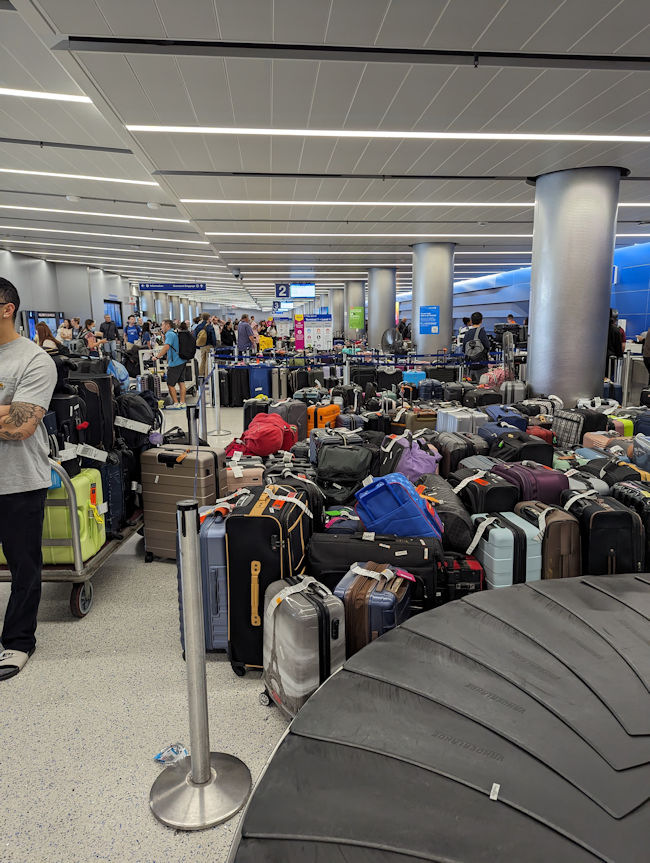
Hope everyone found their luggage in this mess!
Filed under article topic:
FEMA Deployments 